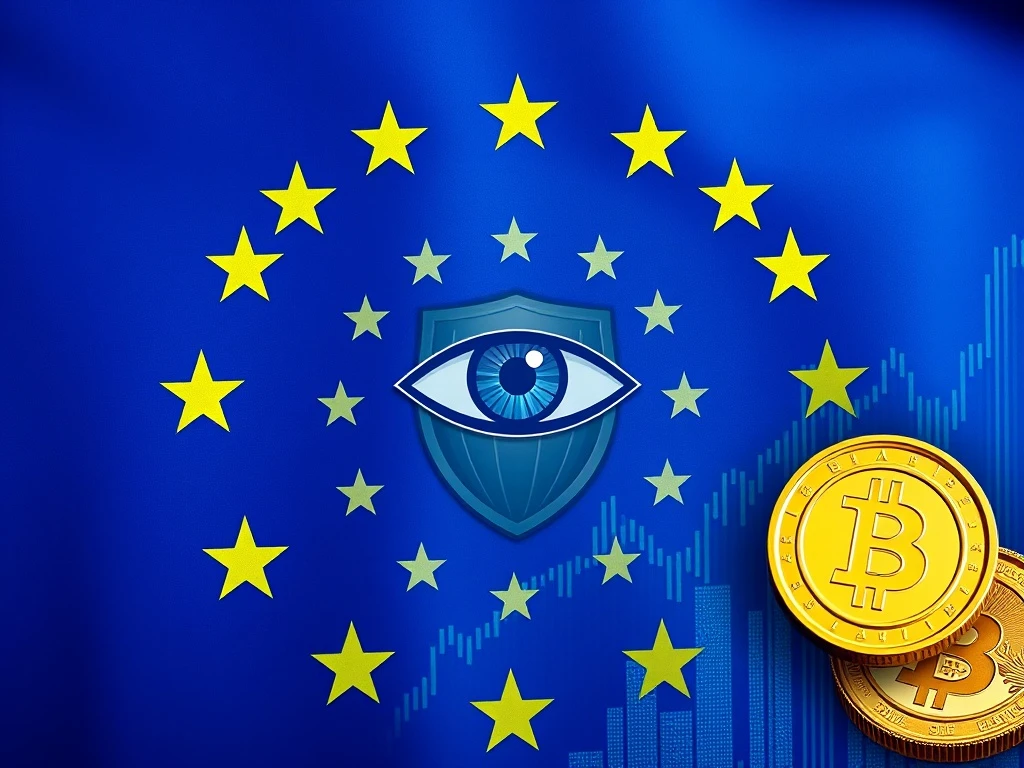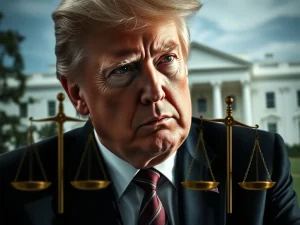EU Crypto Regulation: A Bold Step Towards Unified Oversight

Europe’s financial landscape currently faces fragmentation. This situation hinders growth and complicates cross-border operations. The European Union now plans a significant shift. It aims to consolidate oversight for both stock and cryptocurrency exchanges. This ambitious move seeks to create a more competitive environment, especially for emerging startups. Therefore, understanding the potential impact of this **EU crypto regulation** is crucial for market participants.
The Vision for Unified EU Crypto Regulation
The European Commission is actively drafting a new proposal. This plan intends to centralize supervision over the bloc’s financial and crypto sectors. Its primary goal is to make Europe’s capital markets more competitive. Specifically, it targets matching the dynamism seen in the United States. Current arrangements involve numerous national and regional regulatory bodies. This structure significantly increases the cost and complexity of cross-border trade. Consequently, it impedes the development of new businesses and innovative startups. A unified approach promises to simplify compliance and foster a more integrated market. This vision represents a foundational change in how the EU manages its diverse financial ecosystems.
The upcoming proposal would expand the European Securities and Markets Authority’s (ESMA) jurisdiction. This expansion will cover stock and crypto exchanges. It also includes crypto asset service providers and other vital trading infrastructure. The Financial Times first reported on these developments. This move signals a strong commitment to streamlining financial governance. Furthermore, it seeks to create a level playing field for all market participants. The EU’s existing regulatory patchwork often creates inefficiencies. A single, empowered supervisory body could resolve these issues. Therefore, the proposed **EU crypto regulation** aims for greater clarity and efficiency across the bloc.
Strengthening ESMA Oversight: A European SEC in the Making
Empowering a single supervisory body represents a critical step. This new entity would function much like the US Securities and Exchange Commission (SEC). European Central Bank (ECB) President Christine Lagarde strongly supports this idea. She views it as essential for the EU’s “capital markets union.” Lagarde stated in November 2023, “Creating a European SEC, for example, by extending the powers of ESMA, could be the answer.” She emphasized the need for a broad mandate. This mandate must include direct supervision. Such powers would mitigate systemic risks posed by large cross-border firms. Thus, **ESMA oversight** is set to expand significantly.
The commission plans to publish a draft proposal in December. People familiar with the matter shared this information with the FT. This proposal would grant ESMA the final say in disputes between asset managers. It would issue binding decisions without direct supervision. This capability marks a substantial increase in ESMA’s authority. It aims to reduce regulatory arbitrage and enhance investor protection. Moreover, it ensures consistent application of rules across member states. The expansion of **ESMA oversight** is a strategic move. It positions the authority as a central pillar of future European financial stability.
Boosting Europe’s Capital Markets Union
The drive for a robust **capital markets union** is not new. However, this new proposal injects fresh momentum. It seeks to unlock investment and facilitate growth for European businesses. By reducing the complexity of cross-border operations, startups can access capital more easily. They can also expand their services across the 27-nation bloc without facing varied national rules. This harmonization is key to fostering innovation. It also helps in retaining talent and companies within Europe.
A unified supervisory approach directly addresses the existing fragmentation. This fragmentation currently raises the cost of capital. It also discourages cross-border investment. With ESMA at the helm, the EU aims to create a more attractive investment climate. This environment will benefit both traditional finance and the burgeoning crypto sector. Furthermore, it strengthens the EU’s position on the global financial stage. The ambition is clear: make Europe a premier destination for capital and innovation. Therefore, the **capital markets union** initiative is integral to Europe’s economic future.
Navigating the MiCA Framework Challenges
The Markets in Crypto-Assets Regulation (MiCA) represents a landmark in **EU crypto regulation**. It took effect for crypto-asset service providers in December 2024. MiCA allows companies authorized in one member state to “passport” their license. This means they can operate across the entire 27-nation bloc. However, this system has raised concerns about potential enforcement gaps. France, for instance, considered blocking license passporting. This move highlighted fears that some providers might seek licenses in jurisdictions with more lenient oversight.
France became the third country to advocate for ESMA to supervise major crypto companies. Austria and Italy previously voiced similar calls. These concerns underscore the need for a centralized body. Verena Ross, ESMA chair, confirmed the commission’s plans in October. She stated the proposal aims to address “continued fragmentation in markets.” Ross also emphasized the goal of moving closer to a unified capital market across Europe. Consequently, strengthening **ESMA oversight** becomes crucial for the effective implementation of the **MiCA framework**. It ensures consistent application and robust enforcement across all member states.
The Call for a European SEC: A Path to Stability
The vision of a **European SEC** resonates with many policymakers. It offers a clear path to enhanced market stability and investor protection. A centralized authority could monitor large cross-border firms more effectively. This would mitigate systemic risks, which are particularly relevant in the volatile crypto space. The current system, with its array of national regulators, struggles to provide this comprehensive oversight. Hence, a unified approach under ESMA’s expanded powers becomes a logical progression.
Such a body would not only standardize supervision but also boost confidence. Investors and businesses would benefit from clearer rules and consistent enforcement. This clarity is vital for fostering innovation while safeguarding against potential abuses. Ultimately, the creation of a **European SEC** through enhanced **ESMA oversight** signifies the EU’s commitment to building a resilient and competitive financial future. The proposed changes mark a pivotal moment. They could redefine Europe’s standing in both traditional and digital asset markets. The draft proposal, expected in December, will offer more concrete details on this transformative initiative.









